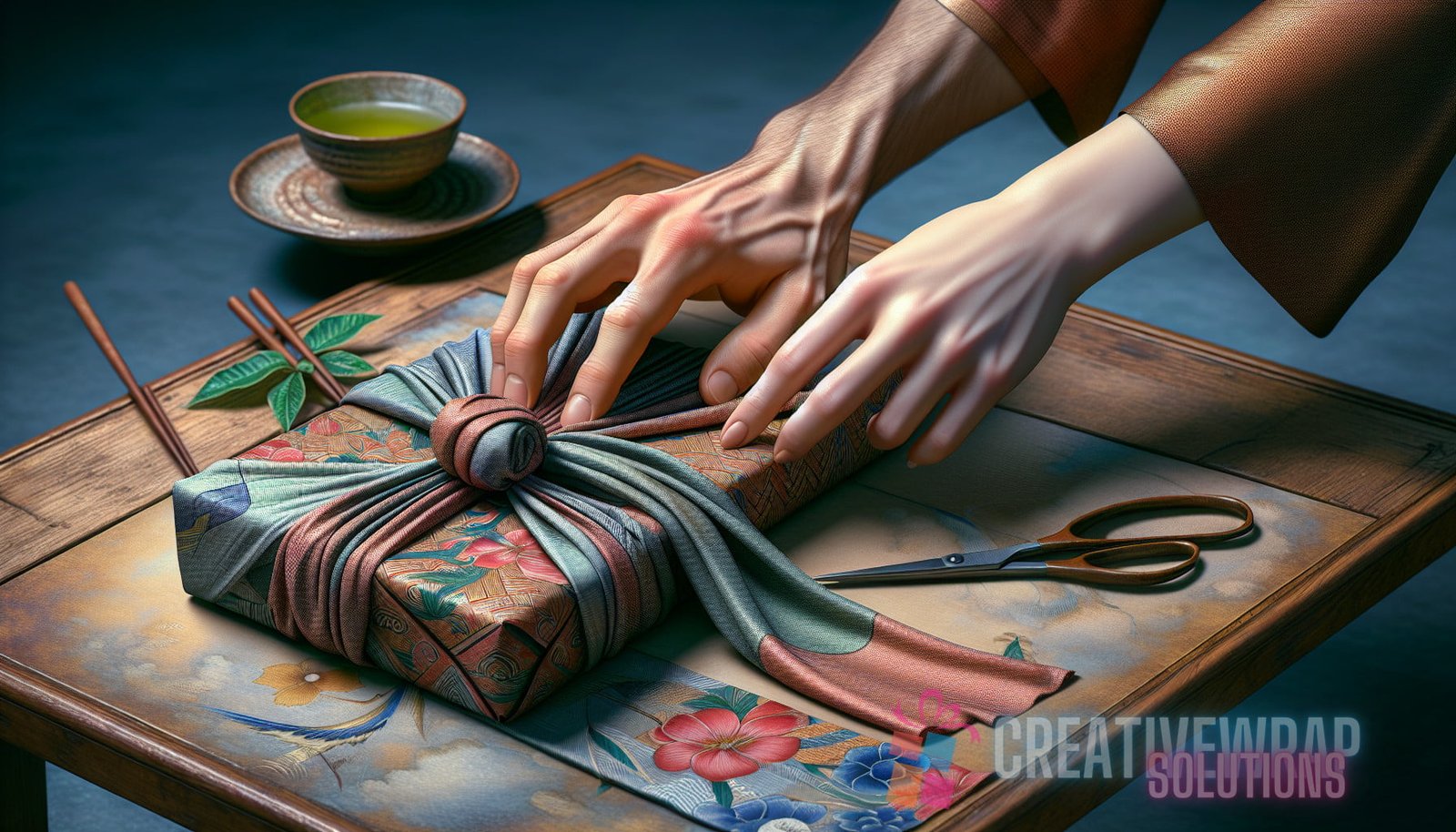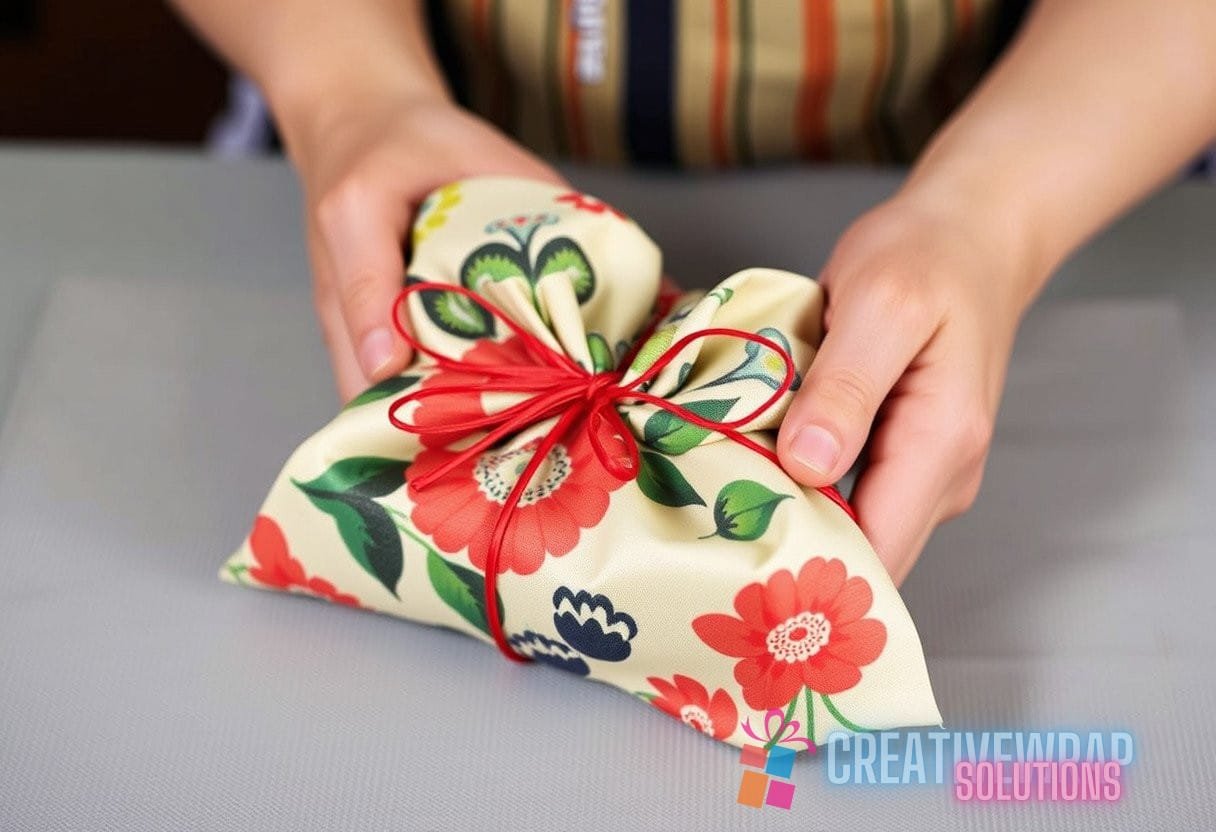Introduction
Furoshiki, the Japanese art of fabric wrapping, has been practiced for centuries and is gaining popularity worldwide for its elegance and sustainability. This traditional technique involves using a square piece of cloth to wrap and carry various objects, from gifts to everyday items. Furoshiki techniques allow for versatile wrapping styles, making it possible to create beautiful and secure packages of different shapes and sizes.
In this article, we will delve into the art of Japanese furoshiki wrapping, exploring its history, cultural significance, and step-by-step techniques. Whether you’re looking to create memorable gifts, practice sustainable living, or simply appreciate the beauty of Japanese craftsmanship, mastering the art of furoshiki is a skill worth acquiring.
The Origins of Furoshiki
Furoshiki has its roots in ancient Japan, where it was initially used to bundle and transport clothes in public baths. The term “furoshiki” itself is a combination of two words: “furo,” which means bath, and “shiki,” which means spread or lay flat. The tradition of using fabric to wrap and carry objects gradually extended beyond public baths and into various aspects of Japanese culture.
Originally, furoshiki cloths were made from silk, a luxurious material that was often adorned with intricate patterns and designs. Over time, cotton became the preferred fabric for furoshiki due to its durability and affordability. However, the art of furoshiki has also expanded to include other fabrics such as polyester and rayon.
The Cultural Significance of Furoshiki
Furoshiki has deep cultural significance in Japan and is often associated with concepts such as gift-giving, environmental consciousness, and aesthetics. Here are some key aspects of furoshiki’s cultural significance:
1. Sustainable Packaging
As the world becomes increasingly aware of the need for sustainable practices, furoshiki offers a viable alternative to disposable gift wrap and plastic bags. By using reusable fabric, furoshiki reduces waste and promotes environmental conservation. In fact, furoshiki has become a central symbol of Japan’s zero-waste movement and is actively encouraged by the Japanese government as an eco-friendly packaging solution.
2. Gift-Giving Tradition
In Japan, gift-giving is a significant aspect of social interactions, from weddings to business exchanges. Furoshiki plays a vital role in these gift-giving traditions, as the cloth itself becomes part of the gift. The act of wrapping and unwrapping the furoshiki is as important as the gift itself, symbolizing a sense of thoughtfulness and care. Furoshiki is often passed down through generations as a treasured heirloom, making it a tangible representation of family traditions.
3. Aesthetics and Craftsmanship
Furoshiki is not merely a functional wrapping technique; it is also a reflection of Japanese aesthetics and craftsmanship. The art of furoshiki involves precision folding, tying, and creating intricate knots to secure the wrapped objects. Traditional patterns and motifs are used to enhance the visual appeal of the furoshiki, adding an element of artistry to the process. This attention to detail and dedication to craftsmanship make furoshiki a beloved and respected art form in Japan.
Types of Furoshiki Techniques
Furoshiki techniques encompass a wide range of wrapping styles, each suited for different purposes and objects. Here are some popular furoshiki techniques that you can master:
1. Basic Wrap
The basic wrap is one of the simplest and most versatile furoshiki techniques. It involves wrapping an object in a square piece of fabric, securing it with simple knots or ties. This technique is suitable for wrapping books, clothes, or any other items of similar shape and size.
For a step-by-step guide on mastering the basic wrap technique, you can refer to the article available here.
2. Bottle Wrap
The bottle wrap technique is specifically designed for wrapping bottles of different shapes and sizes. By following this technique, you can create an elegant and secure wrapping for wine bottles, spirits, or other bottled gifts. The bottle wrap technique utilizes the corners and edges of the furoshiki to create a tailored wrapping.

For a detailed step-by-step guide on mastering the bottle wrap technique, you can refer to the article available here.
3. Bag Wrap
The bag wrap technique allows you to transform a furoshiki into a stylish and functional bag. This versatile technique can be used to create various bag styles, from a simple shoulder bag to an intricate backpack. By mastering the bag wrap technique, you can repurpose your furoshiki as a fashionable accessory for everyday use.
For a comprehensive guide on mastering the bag wrap technique, you can visit the article available here.
Tips for Mastering Furoshiki Techniques
To become proficient in furoshiki techniques, here are some tips to keep in mind:
1. Choose the Right Fabric
Selecting the appropriate fabric is crucial for mastering furoshiki techniques. Opt for fabrics that are durable, easy to fold, and have a suitable size for the objects you plan to wrap. Cotton is a popular choice due to its versatility and sustainability.
2. Practice Folding and Knotting Techniques
Furoshiki requires precise folding and knotting techniques to ensure that the wrapped objects are secure and well-presented. Take the time to practice different folding and knotting methods, paying attention to details such as symmetry and tension.
3. Explore Different Wrapping Styles
Experiment with various furoshiki techniques and wrapping styles to discover the ones that best suit your needs and preferences. Each wrapping style may require different folding and tying methods, so don’t be afraid to try new approaches and adapt them according to the objects you are wrapping.
4. Incorporate Traditional Patterns
To enhance the aesthetic appeal of your furoshiki, consider incorporating traditional Japanese patterns and motifs into your wrapping. Traditional patterns such as seigaiha (blue waves) and kikkou (tortoise shell) can add a touch of elegance and cultural richness to your furoshiki creations.
5. Share the Art of Furoshiki
Once you’ve mastered furoshiki techniques, share the art with others. Encourage friends and family to embrace sustainable wrapping practices and appreciate the beauty of furoshiki. By spreading awareness and knowledge about furoshiki, you can contribute to the preservation of this valuable Japanese tradition.
Conclusion
The art of Japanese furoshiki wrapping offers a unique blend of elegance, sustainability, and cultural significance. Mastering the techniques of furoshiki allows you to create beautiful and eco-friendly packaging for gifts and everyday items. By embracing this traditional practice, you can contribute to a more sustainable lifestyle and appreciate the craftsmanship of Japanese culture.
With its rich history and cultural significance, furoshiki remains an influential aspect of Japanese art and tradition. By continuing to practice and pass down the art of furoshiki, we can ensure that this exquisite art form remains cherished and celebrated for generations to come.
So why not embark on the journey of mastering furoshiki techniques and discover the joy of creating elegant and sustainable gift wraps and packages?

